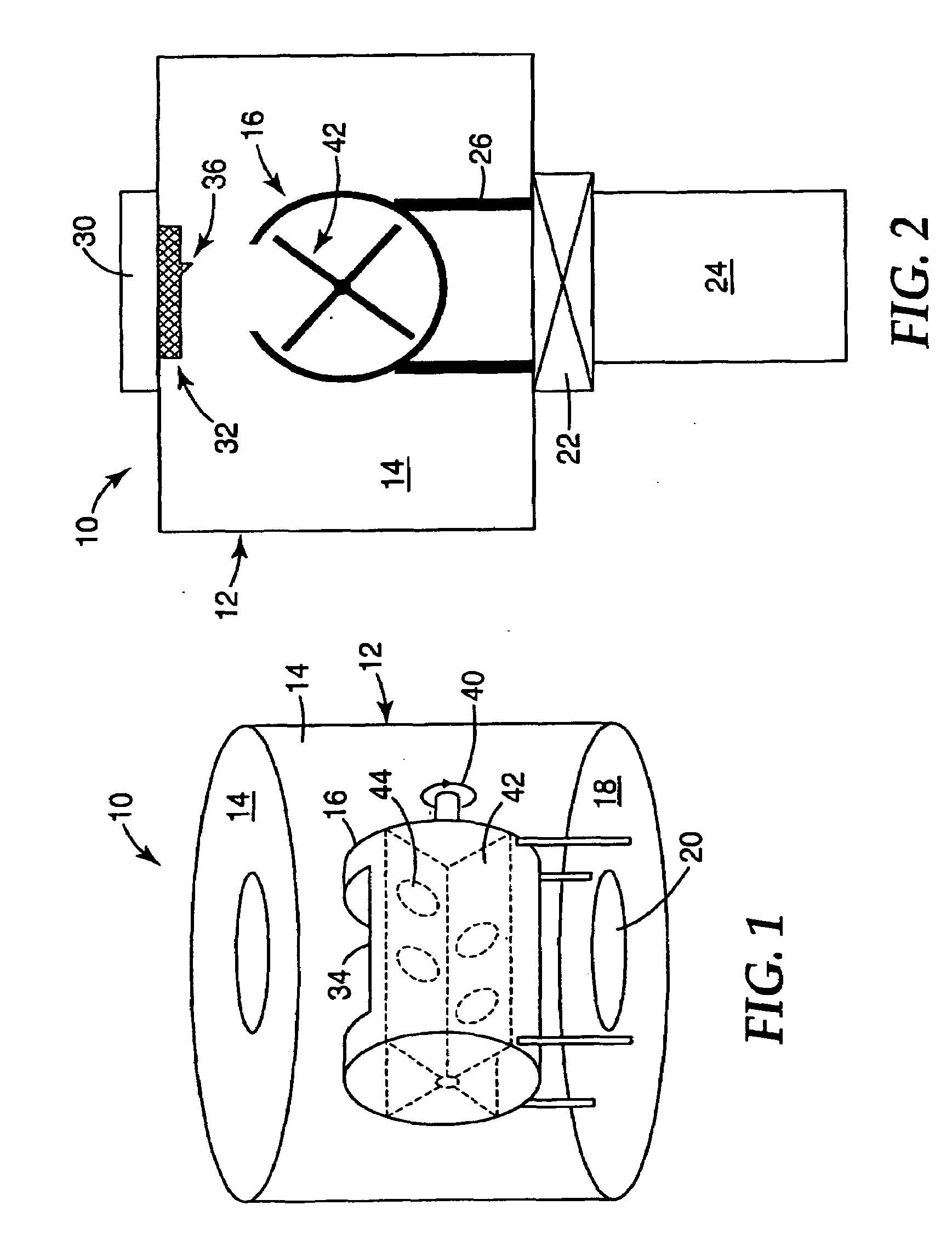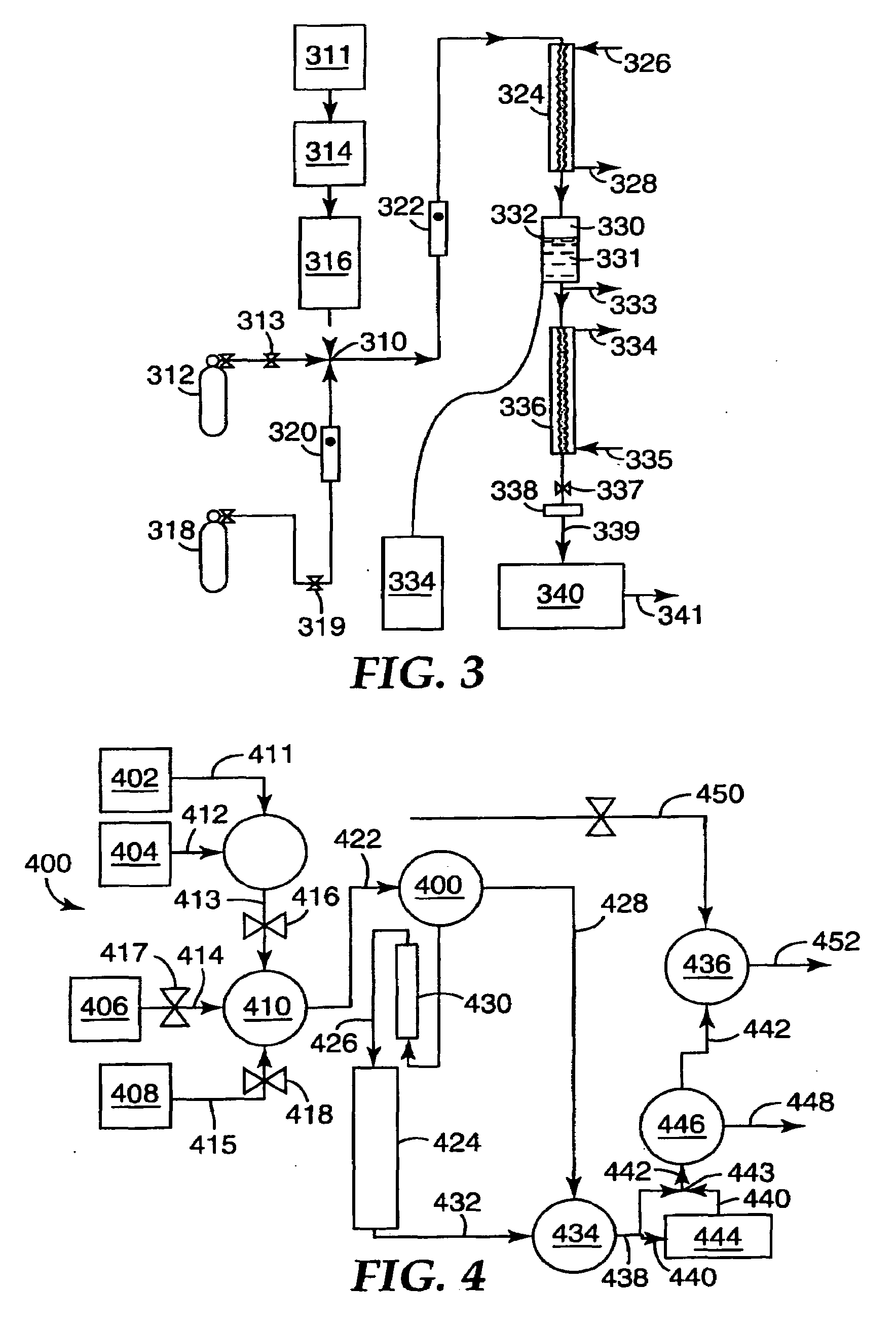Selective Oxidation of Carbon Monoxide Relative to Hydrogen Using Catalytically Active Gold
a catalytically active, carbon monoxide technology, applied in the direction of metal/metal-oxide/metal-hydroxide catalysts, electrochemical generators, physical/chemical process catalysts, etc., can solve the problem that the system still readily oxidizes co, and the catalytic activity of gold is highly active for a relatively long time period, so as to suppress the ability of the resultant catalyst system to oxidize hydrogen and readily oxidize co
- Summary
- Abstract
- Description
- Claims
- Application Information
AI Technical Summary
Benefits of technology
Problems solved by technology
Method used
Image
Examples
example-14-16
Iron-Oxo Domains on Nanoparticulate Titania Via Hydrolysis and Oxidation of an Fe2+-Containing Precursor
[0266]
TABLE 11ReactionOxidationSolution ASolution BConditionsConditionsExample 1415.0 g Ferrous4.53 g of NaOHReaction3 ml 30% H2O2Sulfate in 250. gin 250. gcarried outafter addition ofdeionizeddeionized waterunder nitrogensolutions A and BwaterExample 1515.0 g Ferrous4.53 g of NaOHReactionNo additionalSulfate in 250. gin 250. gcarried outoxidizing agentdeionizeddeionized waterunder nitrogenaddedwaterExample 1615.0 g Ferrous4.53 g of NaOHReactionNo additionalSulfate in 250. gin 250. gcarried out inoxidizing agentdeionizeddeionized waterairaddedwater(Ferrous sulfate heptahydrate: J. T. Baker, Phillipsburg, New Jersey; H2O2: Mallinckrodt Inc., Phillipsburg, New Jersey)
[0267]For examples 14-16, the hydrolysis conditions and reagent amounts are summarized in table 11. In each case a nanoparticle titania dispersion was prepared by mixing 65.0 g of Hombikat UV100 titania (Sachtleben Chem...
examples 17-20
Mixed Metal-oxo Domains on Nanoparticulate Titania
[0276]
TABLE 15OxidationSolution ASolution BAgentExample 173.95 g Zinc Acetate4.95 g NaOHAirdihydrate250.0 g deionized10.0 g Ferrous SulfatewaterHeptahydrate250.0 g deionized waterExample 183.95 g Calcium Acetate4.65 g NaOHAirmonohydrate250.0 g deionized10.0 g Ferrous SulfatewaterHeptahydrate250.0 g deionized waterExample 193.95 g Zinc Acetate4.56 g NaOH10 ml 30%dihydrate250.0 g deionizedH2O210.0 g Ferrous SulfatewaterHeptahydrate250.0 g deionized waterExample 203.56 g Magnesium4.53 g NaOHAirChloride hexahydrate250.0 g deionized10.0 g Ferrous SulfatewaterHeptahydrate250.0 g deionized water(Ferrous sulfate heptahydrate: J. T. Baker, Phillipsburg, New Jersey; H2O2: Mallinckrodt Inc., Phillipsburg, New Jersey; Zn(CH3CO2)2•2H2O: Mallinckrodt Inc., Paris, Kentucky; Ca(CH3CO2)2•H2O: MP Biomedicals, Aurora, Illinois; MgCl2•6H2O: EMD Chemicals, Inc., Gibbstown, New Jersey)
[0277]A solution providing iron and a second metal cation designated “S...
examples 21-26
Varying the Amount of Iron-Oxo Domains on Nanoparticulate Titania from Hydroysis / Oxidation of a Ferrous Salt
[0289]
TABLE 19Solution A ContentsSolution B ContentsExample 211.0 g FeSO4•7H2O0.288 g NaOH Example 222.5 g FeSO4•7H2O0.72 g NaOHExample 235.0 g FeSO4•7H2O1.44 g NaOHExample 247.5 g FeSO4•7H2O2.16 g NaOHExample 2510.0 g FeSO4•7H2O 2.88 g NaOHExample 2620.0 g FeSO4•7H2O 5.76 g NaOH(Ferrous sulfate heptahydrate: J. T. Baker, Phillipsburg, New Jersey)
[0290]For examples 21-26, the reagent amounts are summarized in table 19. In each case a nanoparticle titania dispersion was prepared by mixing 65.0 g of Hombikat UV100 titania (Sachtleben Chemie GmbH, Duisburg, Germany) in 500 g of deionized water using an IKA T18 high energy mixer (IKA Works, Inc., Wilmington, N.C.) fitted with a 19 mm dispersing tool. Solution A and Solution B were added drop-wise to this stirred dispersion of titania over about 40 minutes. The rate of the addition of these two solutions was adjusted so as to add b...
PUM
| Property | Measurement | Unit |
|---|---|---|
| Temperature | aaaaa | aaaaa |
| Temperature | aaaaa | aaaaa |
| Time | aaaaa | aaaaa |
Abstract
Description
Claims
Application Information
 Login to View More
Login to View More - R&D
- Intellectual Property
- Life Sciences
- Materials
- Tech Scout
- Unparalleled Data Quality
- Higher Quality Content
- 60% Fewer Hallucinations
Browse by: Latest US Patents, China's latest patents, Technical Efficacy Thesaurus, Application Domain, Technology Topic, Popular Technical Reports.
© 2025 PatSnap. All rights reserved.Legal|Privacy policy|Modern Slavery Act Transparency Statement|Sitemap|About US| Contact US: help@patsnap.com



